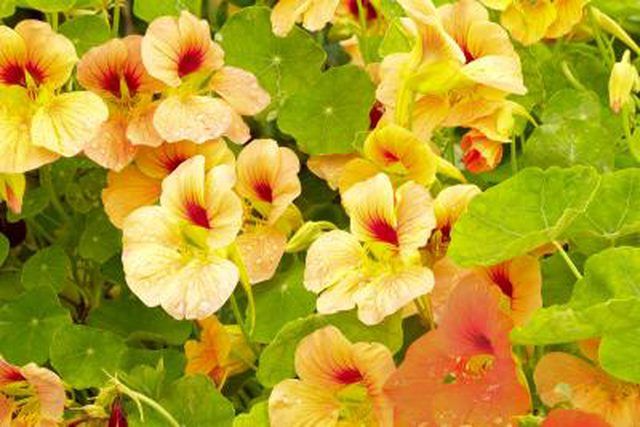Bulbs
Flower Basics
Flower Beds & Specialty Gardens
Flower Garden
Garden Furniture
Garden Gnomes
Garden Seeds
Garden Sheds
Garden Statues
Garden Tools & Supplies
Gardening Basics
Green & Organic
Groundcovers & Vines
Growing Annuals
Growing Basil
Growing Beans
Growing Berries
Growing Blueberries
Growing Cactus
Growing Corn
Growing Cotton
Growing Edibles
Growing Flowers
Growing Garlic
Growing Grapes
Growing Grass
Growing Herbs
Growing Jasmine
Growing Mint
Growing Mushrooms
Orchids
Growing Peanuts
Growing Perennials
Growing Plants
Growing Rosemary
Growing Roses
Growing Strawberries
Growing Sunflowers
Growing Thyme
Growing Tomatoes
Growing Tulips
Growing Vegetables
Herb Basics
Herb Garden
Indoor Growing
Landscaping Basics
Landscaping Patios
Landscaping Plants
Landscaping Shrubs
Landscaping Trees
Landscaping Walks & Pathways
Lawn Basics
Lawn Maintenance
Lawn Mowers
Lawn Ornaments
Lawn Planting
Lawn Tools
Outdoor Growing
Overall Landscape Planning
Pests, Weeds & Problems
Plant Basics
Rock Garden
Rose Garden
Shrubs
Soil
Specialty Gardens
Trees
Vegetable Garden
Yard Maintenance
How to Plant Nasturtium Seeds
How to Plant Nasturtium Seeds. Colorful nasturtiums (Tropaeolum nanum) produce blooms in vivid hues of red, yellow and orange. Grow the plants as summer annuals in U.S. Department of Agriculture plant hardiness zones 4 through 8, or as cool-season winter annuals in USDA zones 9 through 11. The flowers do self-sow readily in mild climates, and can...

Colorful nasturtiums (Tropaeolum nanum) produce blooms in vivid hues of red, yellow and orange. Grow the plants as summer annuals in U.S. Department of Agriculture plant hardiness zones 4 through 8, or as cool-season winter annuals in USDA zones 9 through 11. The flowers do self-sow readily in mild climates, and can become invasive. Nasturtiums come in both trailing and upright varieties, suitable for beds and borders.
Getting a Head Start
Nasturtium roots don't tolerate disturbance, but you can start them indoors four weeks before the last expected spring frost, or at the end of summer, if you plant them in biodegradable peat pots. Use a sterile, well-drained potting soil. Setting the pots in a tray helps them hold their shape and catches the water that drains from the pots. Sow one nasturtium pot per 2- or 3-inch-diameter pot, planting the seeds 1/2 inch deep. Nasturtium seeds need darkness to germinate, so don't set them under lights. Covering the pots with a plastic bag retains moisture so they don't need watering until after they sprout, which can take up to 10 days.
The Great Outdoors
Direct seeding in the garden after the last frost or in late summer prevents root disturbance so the plants are more likely to grow well. Choose and prepare the site the same way whether you are direct seeding or setting out indoor-grown transplants. A well-draining, slightly sandy site in full sun results in the best growth and flowering. Overly rich soils, especially those containing abundant nitrogen, cause healthy foliage growth but few flowers. Growth and flowering is also poor in shade. Loosen the planting site down 6 inches and water it until it feels evenly moist before sowing or transplanting.
In the Garden
Planting nasturtium seeds at the right depth outdoors gives them the darkness they need to sprout. Sow the seeds 4 to 6 inches apart in rows set 12 inches apart, planting the seeds 1/2 inch deep and covering them well. Light watering to keep the soil moist but not soggy is all that's needed until the nasturtiums germinate. Thin the seedlings so they are 12 inches apart after they emerge and grow in their second set of leaves. If you are transplanting indoor-grown nasturtiums, space them 12 inches apart when you plant them. Set the pot so the rim is just beneath the soil surface, otherwise the peat wicks moisture away from the nasturtium roots.
Growing On
Although moderately drought tolerant, providing 1 inch of water weekly results in healthier growth. Nasturtiums don't need fertilizer to grow well. The plants flower best when days are warm and nights are cool, and they may temporarily stop blooming during hot weather. After the nasturtiums begin to bloom, pinch off the old flowers as they wilt to encourage new flower buds to form.